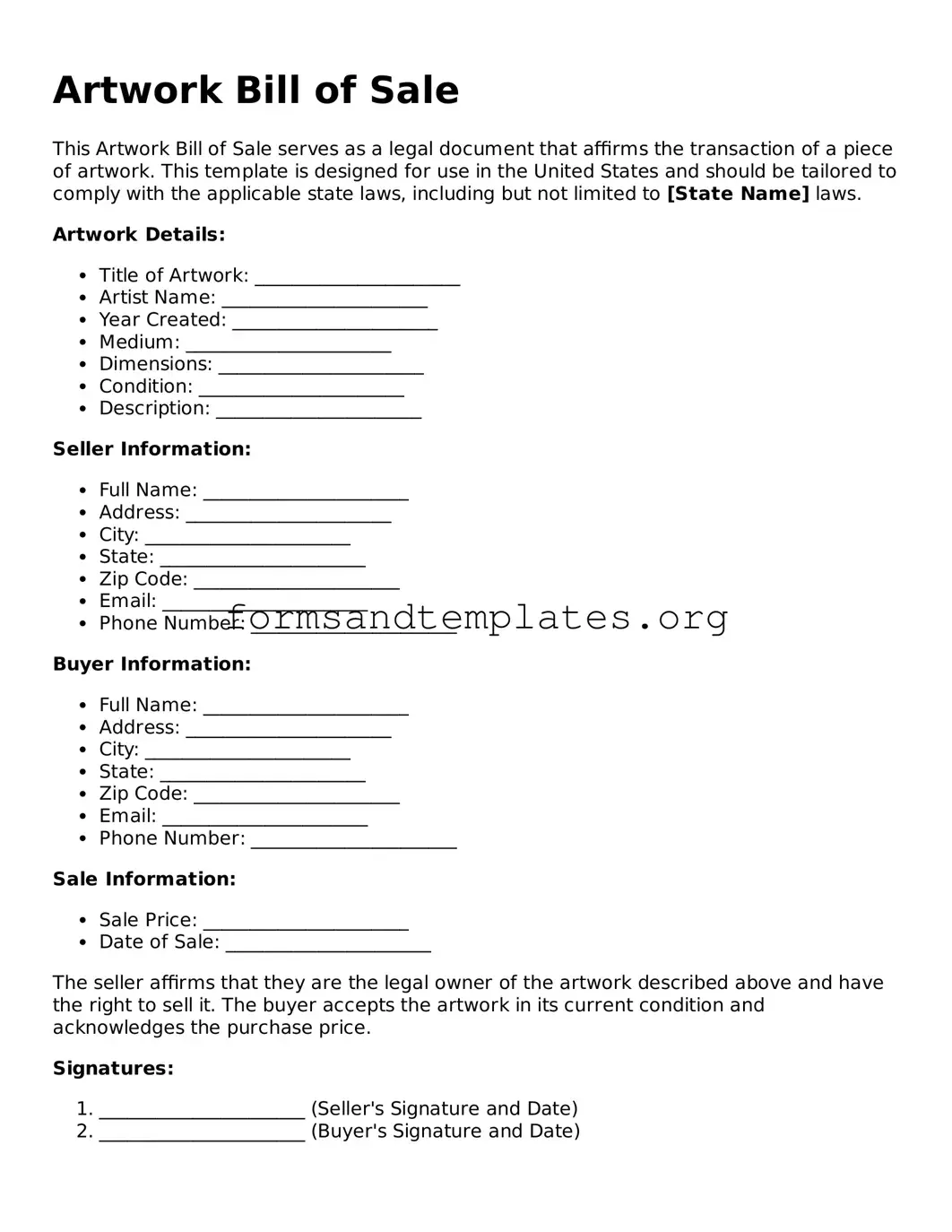What is an Artwork Bill of Sale?
An Artwork Bill of Sale is a legal document that serves as proof of the transfer of ownership of an artwork from one party to another. This form details the transaction, including information about the artwork, the buyer, and the seller. It can be useful for both parties to have a clear record of the sale, ensuring that all terms are agreed upon and documented.
Why do I need an Artwork Bill of Sale?
This document provides protection for both the buyer and the seller. For the buyer, it serves as evidence of ownership and can be crucial for future resale or insurance purposes. For the seller, it protects against any claims of ownership after the sale has been completed. Having a written record also helps clarify the terms of the sale, reducing the potential for disputes.
Typically, an Artwork Bill of Sale should include:
-
The names and contact information of both the buyer and the seller.
-
A detailed description of the artwork, including the title, artist, medium, dimensions, and any identifying marks or features.
-
The purchase price and payment method.
-
The date of the transaction.
-
Any warranties or representations made by the seller regarding the artwork.
Is the Artwork Bill of Sale legally binding?
Yes, an Artwork Bill of Sale is a legally binding document once both parties have signed it. It outlines the terms of the sale and can be enforced in a court of law if necessary. However, it is important that both parties understand the terms before signing, as it may be difficult to change them later.
Do I need to have the Artwork Bill of Sale notarized?
Notarization is not typically required for an Artwork Bill of Sale, but it can add an extra layer of authenticity and security to the document. If both parties are comfortable with it, having the bill of sale notarized can help prevent disputes about the transaction in the future.
While you can use a standard Bill of Sale form, it is advisable to use one specifically tailored for artwork. This ensures that all relevant details about the artwork and the sale are covered. A specialized form can help avoid any ambiguity that might arise from using a generic template.
What happens if there is a dispute after the sale?
If a dispute arises after the sale, the Artwork Bill of Sale can serve as a key piece of evidence. It outlines the terms agreed upon by both parties, which can help resolve misunderstandings. If the matter escalates, it may be necessary to seek legal advice or mediation, but having a well-documented bill of sale can simplify the process.
